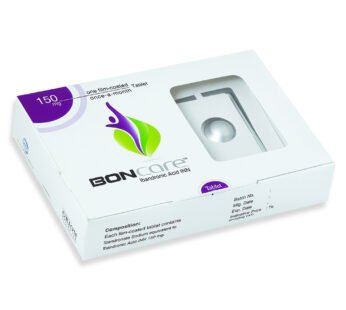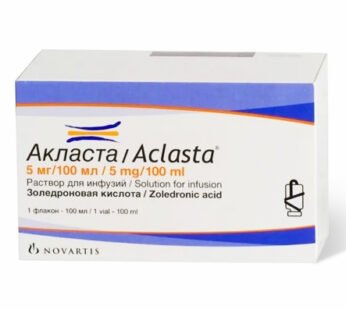Description
Indications
Comet XR tablets are indicated for managing type 2 diabetes mellitus, particularly in overweight patients, when dietary management and exercise alone fail to provide adequate glycemic control.
-
In adults: Comet XR can be used as monotherapy or in combination with other oral antidiabetic agents or insulin.
-
In children (10 years and above) and adolescents: Comet XR can be used as monotherapy or in combination with insulin.
Studies have demonstrated a reduction in diabetic complications in overweight adult patients with type 2 diabetes treated with metformin as a first-line therapy after dietary management failure.
(Take this medication only under the guidance of a registered physician.)
Pharmacology
Metformin, the active ingredient in Comet XR, belongs to the biguanide class of oral antihyperglycemic drugs. It helps manage type 2 diabetes by lowering both basal and postprandial plasma glucose levels. Unlike sulfonylureas, metformin does not stimulate insulin secretion or cause hypoglycemia.
Mechanism of Action:
-
Decreases hepatic glucose production.
-
Reduces intestinal absorption of glucose.
-
Improves insulin sensitivity by increasing peripheral glucose uptake and utilization.
Dosage & Administration
The dosage of metformin should be individualized based on effectiveness and patient tolerance.
Metformin Immediate-Release Tablets:
-
Adults:
-
Starting dose: 500 mg twice daily or 850 mg once daily with meals.
-
Dose adjustments: Increase by 500 mg weekly or 850 mg every two weeks, up to a maximum of 2000 mg per day (divided doses).
-
For additional glycemic control, doses up to 2550 mg per day may be administered, preferably divided into three doses with meals.
-
-
Children:
-
Starting dose: 500 mg twice daily with meals.
-
Dose adjustments: Increase by 500 mg weekly, up to a maximum of 2000 mg per day in divided doses.
-
Metformin Extended-Release Tablets:
-
Adults:
-
Starting dose: 500 mg once daily with the evening meal.
-
Dose adjustments: Increase by 500 mg weekly, up to 2000 mg once daily with the evening meal, or 1000 mg twice daily with meals.
-
Patients switching from immediate-release tablets may transition to extended-release tablets up to the recommended maximum dose.
-
-
Children: Not studied for extended-release formulations.
-
Renal Impairment:
-
Do not use if eGFR <30 mL/min/1.73 m².
-
Evaluate risks if eGFR is between 30–45 mL/min/1.73 m².
-
(Take this medication only under the guidance of a registered physician.)
Interaction
-
Co-administration with furosemide has no long-term interaction data.
-
Nifedipine enhances metformin absorption but has minimal reciprocal effects.
-
Cationic drugs (e.g., amiloride, digoxin, quinidine, vancomycin) may compete for renal tubular secretion, potentially causing interactions.
-
Cimetidine may require dose adjustment due to altered metformin clearance.
-
Medications like corticosteroids, estrogens, and diuretics may induce hyperglycemia and affect glycemic control.
Contraindications
-
Hypersensitivity to metformin or any excipient.
-
Acute metabolic acidosis (e.g., lactic acidosis, diabetic ketoacidosis).
-
Severe renal impairment (eGFR <30 mL/min/1.73 m²).
-
Acute conditions that could alter renal function (e.g., dehydration, severe infection, shock).
-
Conditions causing tissue hypoxia (e.g., cardiac or respiratory failure, recent myocardial infarction).
-
Chronic alcoholism or acute alcohol intoxication.
Side Effects
-
Blood and Lymphatic System Disorders: Rare – Hemolytic anemia.
-
Metabolism and Nutrition: Rare – Lactic acidosis, reduced vitamin B12 absorption, megaloblastic anemia.
-
Nervous System: Common – Taste disturbances. Rare – Encephalopathy.
-
Gastrointestinal Disorders: Common – Nausea, vomiting, diarrhea, abdominal pain, loss of appetite (especially during initiation).
-
Hepatobiliary: Rare – Abnormal liver function or hepatitis.
-
Skin Disorders: Rare – Rash, itching, hives.
Pregnancy & Lactation
-
Pregnancy: Uncontrolled diabetes during pregnancy increases the risk of congenital abnormalities. Insulin is preferred during pregnancy to achieve near-normal blood glucose levels.
-
Breastfeeding: Metformin is excreted into breast milk. While adverse effects in infants are rare, breastfeeding is generally not recommended during metformin treatment.
Precautions & Warnings
-
Regularly monitor renal function as metformin is excreted by the kidney.
-
Discontinue metformin 2–3 days before surgery or diagnostic tests requiring iodinated contrast media.
-
Long-term use may reduce vitamin B12 levels; annual monitoring is recommended.
-
Exercise caution when combined with insulin or sulfonylureas due to hypoglycemia risk.
Use in Special Populations
-
Elderly: Adjust dose based on renal function; monitor renal health regularly.
-
Children (10–12 years): Use cautiously, with close monitoring of growth and development.
Overdose Effects
Overdose may lead to lactic acidosis, a medical emergency requiring hospital treatment. Hemodialysis effectively removes lactate and metformin.
Therapeutic Class
Biguanides
Storage Conditions
Store below 30°C, protected from light and moisture. Keep out of reach of children.
Additional information
| Weight | 0.15 g |
|---|








Reviews
There are no reviews yet.